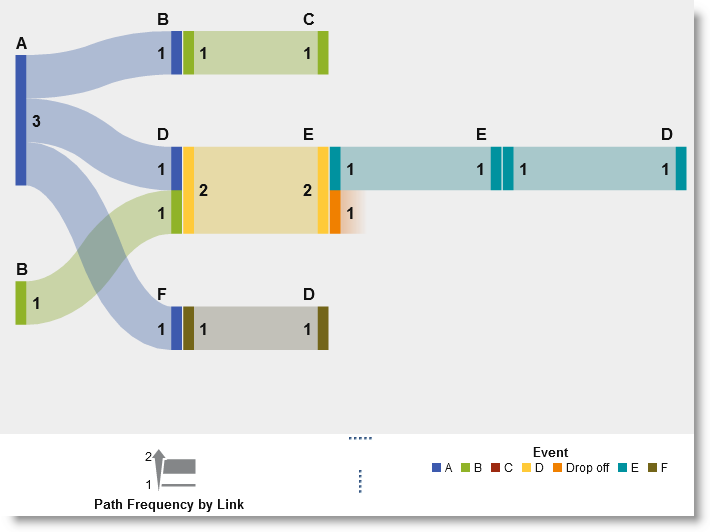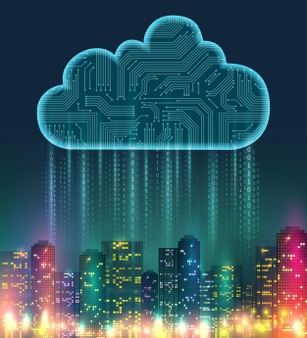Reimaging Retail with Data Sciences
3AI January 6, 2021

Retail data is increasing exponentially in volume, variety, velocity and value with every year. Smart retailers are aware that each one of these interactions holds the potential for profit. The retailers using Data Sciences could potentially raise their operating margins by as much as 60 percent.
However, reports summarizing average behavior don’t provide the useful insights needed to determine how individual customers are likely to behave because general behavior tendencies are simply too broad. In order for retailers to create a meaningful dialogue with customers that honors the shopper’s preferred level and mode of engagement, it takes more than summarized reports, which is why the Data Science infusion in the new digital and data trends of Retail Industry will provide the opportunity to significantly change the retail marketing industry.
Algorithmic Predictive Modelers
Customer intelligence is the practice of determining and delivering data-driven insights into past and predicted future customer behavior. To be effective, customer intelligence must combine raw transactional and behavioral data to generate derived measures. The process can best be described using the saying, “It’s not the data that is collected, and it’s the data that is created.” Put into a predictive modeler’s perspective, the team not only collects a large amount of data, but also contextualizes that data by building derived attributes that provide additional insight into customer intent.
Retail experts have domain expertise and can best frame the problem customer intelligence is aiming to solve. They suggest derived attributes that will provide value to both the brand and the company’s marketing campaign. Data geeks are needed to program these ideas and store them in a suitable database, which can often lead to greatly increased data storage requirements for the retailer. However, if the data can only be used to create solutions or make key marketing decisions if it’s properly stored and accessed. Inaccessible data means useless data and a wasted opportunity.
Algorithmic Predictive modelers and data scientists are then needed to use the stored data to build models that achieve those business objectives originally set by the retail expert. Predictive models find relationships between historic data and subsequent outcomes so that near-term and long-term customer behavior can be predicted. This leg of the stool aims to answer problems such as the likelihood of when a shopper will make their next purchase and what the value of that purchase will be. Sometimes, these relationships are so complex that only machine learning techniques will find them.
The Data Scientist’s job is to burrow into the mountain of big data (internal or external, structured or unstructured) to find gold. In other words, the actions retailers can take to reduce costs and increase sales, spanning the following avenues:
Behavioral Science in Merchandizing
Layouts, promotional displays and product placements could be improved using heat sensors and image analysis employing behavioral science. This culminates in the identification of shopping trends, thereby opening up a potentially large play-ground for precise cross-selling opportunities. The behavioral science attributes could further be collected through video data analysis in the retail locations. The combination of internal and external data (e.g. economic forecasts, weather and traffic reports, holiday and seasonal trends) teamed with behavioral pattern data would lead to higher daily profits. Behavioral Science based merchandizing can further leverage faster revenue growth through detailed market basket analysis.
The data collection and analysis doesn’t end by purchase. Insights using product sensors that would relay real-time information on post-purchase use would be instrumental in a feedback analysis, which could be clubbed with Sentiment analysis of social media streams, call center records, product reviews, etc. for customer feedback and market insights, that would further lead to re-designing marketing and production.
Supply Chain Science
Predictive analytics are increasingly important to Supply Chain Management making the process more accurate, reliable, and at reduced cost. To be at the top of your game as a supply chain manager you need to understand and utilize advanced predictive science. Real-time pricing using “second by second” metrics (e.g. supply chain and inventory data, competitor pricing, market and consumer behavior data) teamed with data induced Demand-driven forecasting through a combination of structured and unstructured data by employing Data Sciences can speed up sales and SKU movement.
Location and demand data can be tracked in real time and leveraged for Route optimization using algorithmic models for more efficient transportation using GPS-enabled telematics.
Creating more effective supplier negotiations becomes possible using Data Sciences by leveraging the in-store records and employing Data Science predictive practices to assess the most favorable vendors for a crucial time window.
Micro-Segmenting
We live in an age where smart companies can identify up to 10,000 customer segments with 50,000 attributes for every single customer. Micro-Segmentation gives you a granular view of each customer and the markets in which they live. Combining multiple data sources, such as CRM, transactional data, social media, Web, call center, behavioral, product sensors and marketing campaign responses, and one could leverage targeted campaigns using data sciences to segment consumers, identify the most appropriate channels and achieve optimal ROI. This leads to considerable increase in conversions. Rapidly correlate new segmentation areas could lead to maintaining a competitive advantage.
Augmented Reality induced Digital footprint to Localize Businesses
Modern phones have powerful GPS receivers, compasses and accelerometers that make it possible to know exactly where it’s located and what they are looking at. AR apps such as Layar take advantage of this to show people information about their surroundings including what businesses are nearby.
Retailers, by combining augmented reality with localized SEO, are using this technology to reach consumers that, previously, were beyond their grasp. For example, if a pedestrian in an unfamiliar area realizes they need a pair of shoes urgently, they can use an augmented reality app on their phone to not only point them to nearby shoe stores, but browse the stock of those stores before heading to them.
By combining Data Science and Augmented Reality, the digital footprint of a customer can be precisely tracked as he/she explores through the virtual realm of the retail store, which could provide us with valuable information pertaining to the customer behavior. This could further be leveraged to create the next generation of Recommendation Systems.
Hyper Personalization
Hyper personalization is the new norm when it comes to customer engagement and Profit Driven Marketing. It is, simply put, the art and science of using data to deliver tailored content, services and products, to segmented prospects, to create maximum opportunities for your customers.
This information can be gleaned from sources such as (Facebook, Twitter, Instagram, LinkedIn, Tumblr, Wikipedia, Flickr, etc.), and surveys. The really smart sellers go even deeper, making suggestions based on the customer’s circle of friends on social media. It is an ingenious way to target customers, and it works.
Two computational techniques are used to achieve this – Attribute Analysis and Event Sequence Analysis. Both help bring the customer to the center of communications based on rich and reliable profiles. Attribute Analysis breaks down a customer into a map. Attributes can be captured and organized by type – demographic, physical, psychological, functional, professional, aspirational, etc. Each attribute then can be mapped on to a product, service, or piece of communication related to the original query/interaction.
Event Sequence Analysis, on the other hand, observes the sequence of events a customer goes through until the buy (or don’t buy) decision is reached. The objective of event sequence analysis is to understand the lead indicators for certain positive action (for example buy) or negative action (attrite).
Hyper Personalized recommendations like Location-based and personalized offers on mobile devices could lead to a much evolved zero-distance, direct advertising and multi-level reward programs based on purchase preferences, online data, and smartphone apps could bridge the last-mile gap in converting to a buying decision.

The Omni-Experience
The ultimate goal, of course, is a seamless, streamlined experience for all involved. From the moment the product leaves the manufacturer, to its journey to the warehouse or store floor, to its purchase and appreciation, the retailer is looking for maximum efficiency in every department.
In a way, we’re going back to the old model of the general storekeeper. This man (or woman) knew the story of every person in town. He knew what vegetables you liked to eat, what clothes you preferred to wear, how much you could afford to spend that week, your family predisposition to halitosis… He knew it and he used it to make recommendations that fit you and no other. That’s the relationship retailers are aiming for.




